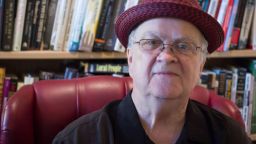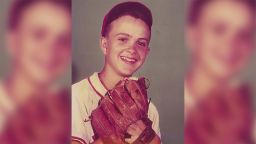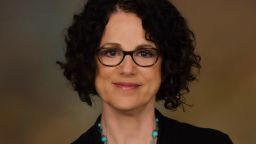It’s getting hard to keep up with the latest hashtags devoted to 911 calls on black people.
There’s #SittingInStarbucksWhileBlack, #BarbecuingWhileBlack, #GolfingWhileBlack, #EatingSubwayWhileBlack, and even #WearingSocksWhileBlack. Those are just some of the infractions committed by black people that caused white callers to dial 911.
As stories of these encounters ricochet across the media, it looks at times as if some mysterious new contagion – a quickly mutating form of racial profiling – is taking hold of the collective psyche of White America.
But this behavior isn’t a symptom of anything new. It’s a modern twist on something old, say some historians and those who’ve lived through it. This aggressive patrolling of public space bears an eerie resemblance to another race-induced contagion in America decades ago.
When the courts outlawed overt segregation in the 1950s and ’60s, many whites reacted by trying to “privatize” public spaces. They wanted to carve out melanin-free zones in parks, pools and sidewalks to avoid what some folks called “interracial intimacy.”
That battle led to “white flight,” a mass migration to the suburbs of whites who no longer wanted to share their public schools and sidewalks with people of color. What’s happening now is White Flight 2.0. Whites are standing their ground. Consciously or unconsciously, they are reasserting their belief that public spaces belong to them alone, says Kevin M. Kruse, a history professor at Princeton University.
“What we see now is the same underlying dynamic – the feeling that these public spaces cannot be shared,” says Kruse, author of “White Flight: Atlanta and the Making of Modern Conservatism.” “But rather than white flight, it’s fight.
“In the generation before, whites angry that these spaces are being shared or taken over by African-Americans packed up and left. Now they’re digging in and fighting.”
The 911 call may be the weapon of choice right now – perhaps made more obvious by the use of smartphones and social media – but some whites have used plenty of other tools to keep people of color off-balance in public spaces. “Black codes” passed after the Civil War mandated that blacks seek permission before traveling. “Sundown towns” displayed placards at the edge of town warning people of color to get off the streets after sunset. During the Jim Crow era, a black person had to step off the curb when a white person approached.
Making nonwhite people hop in public to the whims and fears of white people is an American tradition, says Robin DiAngelo, author of “White Fragility: Why It’s So Hard for White People to Talk About Racism.”
That behavior is meant to send a message – both then, as well as now with the 911 calls, she says.
“That attitude is, ‘This public space is ours, not yours. And you need to be in your rightful place,’” says DiAngelo, who is white. “It is the classic, ‘Step down off of that curb, I am coming down the sidewalk and you will submit to my presence. I own this country. I own this place. Don’t get uppity with me.’”
Diagnosing this outbreak is one thing, but stopping it is another. There are no Centers for Disease Control guidelines for changing the mind of someone who sees a black girl selling water on the street as a public safety threat.
But talking to those who have been victimized by these 911 calls – as well as someone who was raised in a community where this behavior was normal – may help.
‘You could hear her voice quivering’
A first step begins with the victims of the 911 calls. We usually see them play their part on camera – the befuddled person of color trying to figure out why they’re facing a police officer.
These moments often become sources of grim humor. People joke about them online. Some have created hashtags like #ExistingWhileBlack and #LivingWhileBlack to try to capture them all.
It’s easy to forget how emotionally damaging such experiences can be. Felicia Dobson, however, offers a reminder.
Her family made national news last month when a white Subway employee called 911 on her family because, Dobson says, she thought they might rob the store.
She and her husband, Othniel, were on a family trip when they stopped for dinner at a Subway in rural Georgia with their four children, ages 8, 12, 13 and 19, and the children’s aunt.
Dobson, a college graduate who works in a hospital as an advocate for cancer patients, says she had already been aware of the rash of 911 calls targeting black people.
“Every time I see that on the news it just brings tears to my eyes,” she says from her home in North Carolina.
Her tears turned to shock when it happened to her. She still can’t figure out why someone would think a husband and wife would bring their kids along for a robbery. A tape of the 911 call was released, and she listened to the employee tell the operator that “I need somebody to come through here please, ASAP. Now.”
“I am still shaking and disbelieving,” says Dobson. “She added information to make it sound like we were loiterers, like we didn’t pay for our food, and we were basically casing Subway. Never said we were a family. Never said we had children with us. She was scared and you could hear her voice quivering.”
Blacks can’t saunter in public without a purpose
David Billings can relate to that fear. It’s part of his family’s inheritance.
He grew up in the small town of McComb, Mississippi, during the Jim Crow era. He saw the panic that swept his white community as the civil rights movement reshaped public spaces. His family and friends didn’t just lose their “for whites only” signs. They lost their ability to control how blacks could move through those spaces.

In his memoir, “Deep Denial: The Persistence of White Supremacy in the United States History and Life,” he describes the rules.
“Blacks could not walk through a white neighborhood without a purpose such as going to and from work. They could not saunter or wander through neighborhoods. They could not pause or stop to observe the architecture of a particular house.”
After overt racism was outlawed, Billings writes, whites still found a way to control public space.
“We closed down libraries, pools, theaters,” he says. “We tried to protect ourselves from having to interact with anyone other than other white people.”
Then some whites took it a step further. They built “a private culture in defiance of government dictates,” he writes. Whites withdrew from the “public sphere” across America and migrated to the suburbs to evade integration. The word “public” became a slur. When it was attached to words like “housing,” “transportation” and “schools,” he says, it became a code word that meant poor, black and Latino.
When Billings hears about the 911 calls today, he sees some of the same forces stirring again.
“We feel unsafe if any person of color is in our surroundings and they’re not in a servant’s role,” he says. “It makes us feel vulnerable.”

That fear is mingled with something else – what he calls “IRS,” an internalized racial superiority.
It’s a message that’s passed down from one white generation to another, he says, and it’s buried so deep that many whites are not even aware it’s there.
IRS can lead people to do something so unkind and unfeeling that they’re oblivious to it, he says. Billings still remembers how his hometown church hired guards one Sunday morning to prevent blacks from attending – and then proceeded to praise Jesus.
“When I was growing up, segregation was so deep and enforced that it became a way of life,” he says. “I really didn’t have to think about it. It became something that we didn’t even notice.”
Why these encounters are happening now
But it would be a mistake to think that white flight only involved a physical retreat of whites from the city to the suburbs, says Kruse, author of “White Flight.”
They also withdrew their support – financial, political and social – from public spaces they could no longer control, he says.
He cites a little-known battle of Atlanta that didn’t take place during the Civil War, but during the 1950s and ’60s. White Atlantans staged bitter protests during that time in an attempt to avoid sharing space with blacks at public facilities like golf courses, parks and pools.
Some thought blacks carried diseases that could be spread in shared pools. One Atlantan wrote in 1959 that “there is nothing more intimate and integrated than a black n—– sitting beside a white girl on the trolley,” Kruse recounts.
“They believed that these public spaces, which they considered their own, had been stolen from them and given to another race,” Kruse writes.
That resentment spilled over into two bond initiatives in 1962 and 1963. The city of Atlanta was trying to raise $80 million for improvements to schools, sewers and other public works. It also wanted to build a new civic auditorium and cultural center at the city’s biggest public park.
But the bond initiatives went down to a “smothering defeat,” rejected by a margin of almost 2-1 by Atlanta’s white community. They felt like any advance for civil rights meant an equal loss for whites, Kruse recounts.
“They decided if we’re not going to use these spaces, we’re not going to fund them,” Kruse says.
Some of the whites who make 911 calls on black people in public are making a different decision today, he says. They now feel emboldened to reassert themselves because stances that would have been deemed socially unacceptable before are no longer universally condemned, he says.
President Trump has created a new environment. And “taking back our country” has taken on a literal meaning for some white people calling 911, he says.
“Taking our country back isn’t just about larger politics,” Kruse says. “It happens in small parcels. It’s not just taking the nation back. It’s about taking that space back, that park back, that pool back, of taking it back bit by bit.”
Part of taking it back for some white people is not having to figure out why black and brown people in public make them nervous, says DiAngelo, author of “White Fragility” – especially if they never admit there’s a racial dimension to the 911 calls.
“We don’t want to see because it challenges our identity as good people,” says DiAngelo. “And it would require change that (we) don’t want to engage in. There’s a refusal to know or see that serves us.”
Seeking out the messengers
So how does anyone reach a person who refuses to know?
During the civil rights movement, the nation decided it would no longer tolerate a dual public existence for whites and people of color, Kruse says. But while a court or government can force people to take down the “for whites only” signs in public, it can’t force them to dismantle the walls they’ve built in their hearts.
“If it is something that ordinary people are doing, it’s a lot harder to root out,” says Kruse. “If there isn’t the same sort of a major investment of national energy into this, you’re going to have a lot of these isolated incidents crop up across America.”

White people will ultimately have to stop the spread of these 911 calls because only they have the institutional power to halt the emotions that fuel the behavior, says DiAngelo.
She gives an example from 1920 to show how this could work.
“When women were granted the right to vote, there was only one way for us to possibly get it – and that is for men to give it to us,” DiAngelo says. “I could be mean to a man in a one-on-one interaction, but my group could not deny every single member of his group access to their civil rights. But men could deny every single member of my group access to civil rights. It was on men to change it because they could.”
That kind of change may start within.
That’s what happened to Billings, author of “Deep Denial.” He says he “packed my suitcase full of contradictions” and left his hometown for another world: college and seminary. He became an ordained minister, got active in the civil rights movement and now leads anti-racism workshops across America.
He says he changed because he sought out the “messengers.”
One was an aunt who became a missionary and civil rights activist. Another was a high school English teacher who taught him to think broader than his hometown. They all introduced him to a world “I didn’t even know existed,” he says.
“Most of us have somebody who moves us in a certain direction and opens our world view,” Billings says. “There are always messengers where you live. We have to seek them out.”
Yet there are others like Dobson who have to live in the world they know. This is the world where any banal activity in public – selling water, playing golf, napping – can literally end up with someone facing the barrel of a police officer’s gun.
Dobson knows that #EatingSubwayWhileBlack could have easily become #DyingWhileBlack.
“I thank God that the police officer who came – what if he had been another type of officer?” Dobson says. “We see how that goes wrong in the news. And these are my sweet innocent children, just eating a sandwich. What if that would have happened?”
Many nonwhites have lived with Dobson’s question through much of this nation’s history. They couldn’t “wander” or “saunter” through public spaces. They were constantly reacting to the whims and fears of some white person.
While the recent rash of 911 calls on black people may be new, some say the underlying motivation behind them is as old as “for whites only” signs. As long as jittery white people continue to call the police on black girls selling water on a hot day, or black men wearing socks in a pool, they are unwittingly sending the same message their ancestors did when they forced black people to step off the curb:
“I own this country. I own this space. Don’t get uppity with me.”



























